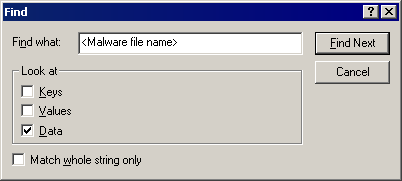TROJ_POSADOR.SMF
Windows 2000, Windows Server 2003, Windows XP (32-bit, 64-bit), Windows Vista (32-bit, 64-bit), Windows 7 (32-bit, 64-bit)


Threat Type: Trojan
Destructiveness: No
Encrypted: Yes
In the wild: Yes
OVERVIEW
This Trojan arrives on a system as a file dropped by other malware or as a file downloaded unknowingly by users when visiting malicious sites.
It deletes the initially executed copy of itself.
TECHNICAL DETAILS
Arrival Details
This Trojan arrives on a system as a file dropped by other malware or as a file downloaded unknowingly by users when visiting malicious sites.
Installation
This Trojan drops the following non-malicious files:
- %System%\{random}.dat
- %System%\{random1}.dat
- %System%\{random2}.dat
- %System%\{random3}.dat
(Note: %System% is the Windows system folder, which is usually C:\Windows\System32.)
It adds the following mutexes to ensure that only one of its copies runs at any one time:
- Global\DFQGJGOMJGXGGW
- Global\PFHNDTZDEOFG
- Global\QPIAFWEOLCGHPAM
- Global\TSMHZXDYUFCGV
Other System Modifications
This Trojan adds the following registry entries as part of its installation routine:
HKEY_CLASSES_ROOT\CLSID\{CLSID}
@ = "{random}"
HKEY_CLASSES_ROOT\CLSID\{CLSID}\
InprocServer32
@ = "%System%\{random}.ocx"
HKEY_LOCAL_MACHINE\SOFTWARE\Classes\
CLSID\{CLSID}
@ = "{random}"
HKEY_LOCAL_MACHINE\SOFTWARE\Classes\
CLSID\{CLSID}\InprocServer32
@ = "%System%\{random}.ocx"
HKEY_LOCAL_MACHINE\SOFTWARE\Microsoft\
Windows\CurrentVersion\Explorer\
ShellIconOverlayIdentifiers\{random}
@ = "{CLSID}"
It adds the following registry keys as part of its installation routine:
HKEY_CLASSES_ROOT\CLSID\{CLSID}
HKEY_CLASSES_ROOT\CLSID\{CLSID}\
InprocServer32
HKEY_LOCAL_MACHINE\SOFTWARE\Classes\
CLSID\{CLSID}
HKEY_LOCAL_MACHINE\SOFTWARE\Classes\
CLSID\{CLSID}\InprocServer32
HKEY_LOCAL_MACHINE\SOFTWARE\Microsoft\
Windows\CurrentVersion\Explorer\
ShellIconOverlayIdentifiers\{random}
Dropping Routine
This Trojan drops the following files:
- %System%\{random}.ocx - detected as BKDR_AFCORE.SM
- %User Temp%\{random}.dll - also detected as TROJ_POSADOR.SMF
(Note: %System% is the Windows system folder, which is usually C:\Windows\System32.. %User Temp% is the current user's Temp folder, which is usually C:\Documents and Settings\{user name}\Local Settings\Temp on Windows 2000, XP, and Server 2003, or C:\Users\{user name}\AppData\Local\Temp on Windows Vista and 7.)
Other Details
This Trojan deletes the initially executed copy of itself
SOLUTION
Step 1
Before doing any scans, Windows XP, Windows Vista, and Windows 7 users must disable System Restore to allow full scanning of their computers.
Step 2
Remove the malware/grayware file dropped/downloaded by TROJ_POSADOR.SMF
- BKDR_AFCORE.SM
Step 3
Identify and terminate files detected as TROJ_POSADOR.SMF
- Windows Task Manager may not display all running processes. In this case, please use a third-party process viewer, preferably Process Explorer, to terminate the malware/grayware/spyware file. You may download the said tool here.
- If the detected file is displayed in either Windows Task Manager or Process Explorer but you cannot delete it, restart your computer in safe mode. To do this, refer to this link for the complete steps.
- If the detected file is not displayed in either Windows Task Manager or Process Explorer, continue doing the next steps.
Step 4
Delete the random registry key/s that this malware created
Important: Editing the Windows Registry incorrectly can lead to irreversible system malfunction. Please do this only if you know how to or you can seek your system administrator’s help. You may also check out this Microsoft article first before modifying your computer's registry.
Step 5
Delete this registry key
Important: Editing the Windows Registry incorrectly can lead to irreversible system malfunction. Please do this step only if you know how or you can ask assistance from your system administrator. Else, check this Microsoft article first before modifying your computer's registry. Before you could do this, you must restart in Safe Mode. For instructions on how to do this, you may refer to this page If the preceding step requires you to restart in safe mode, you may proceed to edit the system registry.
- In HKEY_LOCAL_MACHINE\SOFTWARE\Microsoft\Windows\CurrentVersion\Explorer\ShellIconOverlayIdentifiers
- {random}
- {random}
Step 6
Scan your computer with your Trend Micro product to delete files detected as TROJ_POSADOR.SMF. If the detected files have already been cleaned, deleted, or quarantined by your Trend Micro product, no further step is required. You may opt to simply delete the quarantined files. Please check this Knowledge Base page for more information.
Did this description help? Tell us how we did.


